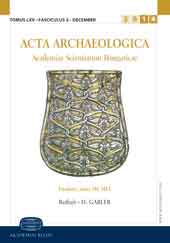Composite stone anchors in the ancient Mediterranean (typology, chronology and their role in the reconstruction of ancient trade) – A proposal
Composite stone anchors in the ancient Mediterranean (typology, chronology and their role in the reconstruction of ancient trade) – A proposal
Author(s): János Attila TóthSubject(s): Archaeology, Economic history, Ancient World
Published by: Akadémiai Kiadó
Keywords: composite stone anchors; ancient trade; ancient Mediterranean; typology; chronology;
Summary/Abstract: Composite stone anchors are stone slabs with two or more holes drilled into them. One of these functions as a rope hole through which the anchor cable is fixed. The other hole or holes are the toothholes in which a wooden bar is fixed to help in fastening the anchor to the seabed. This class of anchors holds the ship not only by its weight, but also by the teeth hooked into the sea bottom. The idea, that these objects were used as “sand-anchors” (on sandy sea-floors) is not supported by archaeological evidence: materials from several ports and anchorage sites demonstrate that both weights and composite anchors were used on the same sea floor types. A basic problem with stone anchors is their chronology. The widely cited monograph by McCaslin on specimens from the Eastern Mediterranean concludes that the main use of stone anchors was limited to the Late Bronze Age.
Journal: Acta Archaeologica Academiae Scientiarum Hungaricae
- Issue Year: 53/2002
- Issue No: 1-3
- Page Range: 85-118
- Page Count: 34
- Language: English
- Content File-PDF

